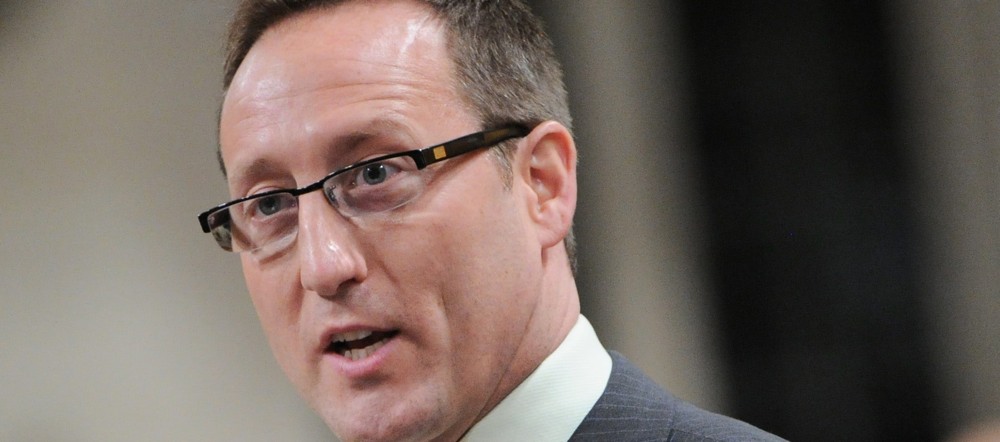Forget Peter MacKay’s Mother’s Day note, here is the real issue
How many women are being appointed to the courts?
The Supreme Court of Canada will rule Friday morning on whether mentally competent but suffering, terminally ill patients have a right to a medically assisted death. The Supreme Court is seen in Ottawa on Friday, Feb. 6, 2015. Sean Kilpatrick/CP
Share
There is some dispute as to what precisely Peter MacKay said to a meeting of the Ontario Bar Association’s council two weeks ago. According to several lawyers who spoke to the Toronto Star, the justice minister suggested women weren’t applying for judicial appointments because they feared being taken away from their children. But according to MacKay, he has been misquoted and unfairly attacked.
And from this controversy has followed a secondary controversy about the tone and wording of the minister’s Mother’s Day and Father’s Day notes to staff at the justice department.
Without the public release of an audio recording of MacKay’s meeting with the Ontario Bar Association’s council, it’s difficult to settle a debate over what he may or may not have said. While the appropriateness of his respective salutes to mothers and fathers is perhaps an easy excuse for controversy and mockery, it hardly seems a consequential matter on which to vigorously scrutinize a cabinet minister.
So let’s try to sort out something that should be both verifiable and consequential: How many women are being appointed to the judiciary?
In his statement on Sunday afternoon, the justice minister boasted of his government’s record on judicial appointments:
On the advice of these judicial advisory committees, since 2006, we have appointed 182 highly qualified women to the superior and appeal courts of this country. This is a 17 per cent increase over the previous Liberal government.
First, the minister seems to have conflated two different measures here. The 17 per cent increase apparently refers to the fact that, since the Conservatives took office, the percentage of federally appointed judges who were women has risen from 29 per cent (as of Jan. 1, 2006) to 34 per cent (as of June 1, 2014).
Several hours after MacKay boasted of that increase, Erin Crandall, an academic at Queen’s University, tweeted that she was puzzled by the minister’s claim. Crandall is currently studying judicial appointments by the federal and provincial governments, and she subsequently tweeted figures on the number of provincial appointments made by the last two federal governments under section 96 of the Constitution Act:
By my count:
CON provincial s. 96 court appointments (2006-14): 32% women
LIB provincial s. 96 court appointments (1994-2005): 35% women
Section 96 covers the vast majority of judicial appointments made by the federal government, but for an official and complete count, I asked MacKay’s office for the total number of appointments made since 2006. As the justice minister said in his statement, the Conservatives have appointed 182 female justices. But that’s out of a total of 602 appointments. As a percentage, the Conservative government’s female appointments thus account for 30 per cent of their total appointments.
(How is it possible that the overall count of female justices has increased to 34 per cent, even as the rate of appointment has been 30 per cent? I confess I’m not entirely sure. One possibility suggested to me: The rate of retirement for men among a traditionally male judiciary could be much higher than the retirement rate for women.)
I’ve not yet been able to get an official tally for the Liberal years, although, as noted above, Crandall has the Liberals appointing a higher proportion of judges under section 96. This paper published in the Toronto Law Journal in 2008 included tallies for the Brian Mulroney and Jean Chrétien governments. In the second term of the Progressive Conservatives government, 22.8 per cent of judicial appointments were women. During the three terms of Chrétien’s government, the percentages of female appointees were 33.6, 37.3 and 31.6 per cent. The Globe‘s Kirk Makin reported in 2011 that approximately 40 pe rcent of the appointments made in 2005 were women.
(There is some possibility, I suspect, of differences in how appointments have been identified and calculated. I’ve asked for an official tally of appointments made between 1993 and 2006 and will pass that along if I obtain one.)
But the percentage of appointees who are women is only part of the equation here. To better understand the 30 per cent rate of the Conservative government, it would be useful to know how many women are applying for those appointments. Does that rate of appointment reflect a similar rate of application? Has there been a trend of declining numbers of women applying for federal appointments? Those data don’t seem to be publicly available. I’ve asked for that information, but I haven’t been able to get it as yet. (I’ll continue to pursue it on Monday and will publish whatever I get.)
Conversely, the judicial appointments advisory committee in Ontario keeps track of applications from women and publishes the data. Go to page 22 of this report and you can see the rate at which women have been applying for provincial appointments in Ontario from 1989 through 2012. As charted by Crandall, the rate of applications from women to the Ontario court of justice has been on the increase over the last two decades.
For all the discussion around the justice minister and gender, somewhere here is the most relevant issue: How many women are being appointed to the judiciary? Why? And, if we so desire, how can we go about improving that number?
For further reading, see this op-ed by four prominent academics and this op-ed by former justice minister Irwin Cotler.
